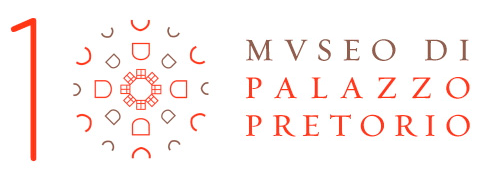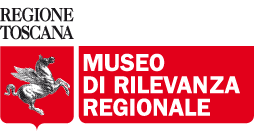/ri.tràt.ti/ /pôrˌtrāts/
From 23 April 2022 to 31 July 2022

Pietro Costa, /ri·tràt·ti/ /ˈpôrˌtrāts/, curated by Chiara Spangaro, presents for the first time to the public the selection of the portraits made by the artist between 2018 and 2022.
The exhibition deepens the artist's bond with the Tuscan city, where he worked on the first in the series of family portraits - Gori Family Portrait, (2019), comprising of eight portraits, spanning three generations, starting with the patriarch Giuliano Gori, founder of Fattoria di Celle, collector and patron of Prato. The exhibition also includes other portraits of individuals and families, such as those of father-son Sandro and Gianni Veronesi, other citizens of Prato and Italy.
The works are a more updated selection of the bloodworks series, which the artist has undertaken since the late eighties.
Bloodworks looks at the issues of identity between art and science and the concept of physical and biological portrait as it pertains to representation of the individual and of community.
The works are created with the blood of the subject being portrayed, used as a pigment between two mylar sheets.
Made on commission, these conceptual works retain the biological character of the commissioner together with the environmental data of the spaces where the work has been made. At times Costa visualizes the physical aspect of the donor through his photography, other times he obliterates their features by exposing nothing but his haematic portrait.
In the early 1980s, the artist started his art practice by investigating the relationship between image and object, real and recreated space. He employed a wide array of materials and processes, ranging from paint on canvas to paint on shaped plywood and stone, from molten materials (metals, concrete, wax) to blown and cut glass, all the way to neon, liquids and combustible gasses. His practice investigates the theme of identity of materials, objects in space, places and their history, color and light. In the following decade, Costa wondered how he could make a self portrait in this time and space in history, and he found the answer in his own body. By drawing his own blood and adding it as another medium to his already variegated artistic vocabulary, he focused his attention on his own identity, and then onto the identity of others. With this medium, other than the study of space, of light, of shape, and of vision, even entropy, decay, and frailty entered his art practice and then solidified at the center of it. Starting from the art of self-portrait and self-representation, the artist enriched his own gallery by including the blood of his relatives and friends who partook in the project, subsequently opening the floor to acquaintances and strangers and those families and chosen families whose histories and roots crossed his own personal path and his artistic output. The body of work, which has increased in volume and variety for the past 30 years both in terms of composition and in terms of execution reflects the artist’s interest in the biological trace that each human being leaves in the world, and in the correspondence with the permanence of the memory of them whether personal or public. Throughout the course of human history, religious rituals and art practices evolved side by side, and they naturally contaminated and influenced each other.
Costa’s work resides in this intersection of contamination and crosspollination, where environment, time, and subjectivity feed off of each other.
Pietro Costa (1960) resides in New York where he emigrated with his family in 1972. He studied at the School of Visual Arts and Hunter College and currently divides his time between the United States and Italy. From his first collective exhibition in 1979, Costa has always continued his artistic practice, mixed with a multifaceted life that has allowed him professional experiences in multiple disciplines. He has exhibited in the United States and in Italy - in institutional and private venues, in group and solo exhibitions - and has created site-specific commissions for museums and art centers including: the New House Center for Contemporary Art, the Hudson River Museum, the Katonah Museum, the Certosa di San Lorenzo in Padula, the Castello Macchiaroli in Teggiano. His work has been exhibited in galleries in the United States and Italy including: the Penine Hart Gallery, the Stark Gallery, the Galleria Piano Nobile in Perugia, Il Ponte Contemporanea in Rome.
His practice spans drawing, painting, sculpture, and site-specific installations employing a broad vocabulary that includes nature, light, metals, fire, plastics, waxes, glass, words and blood.
In this universe where the human mixes with nature, Costa continues his artistic practice of spatial, material and biological identity.
Follow on Instagram
@pietrocosta_studio

